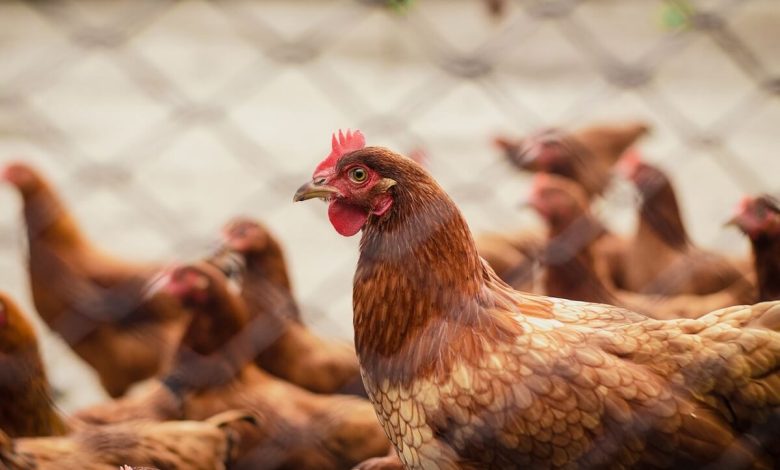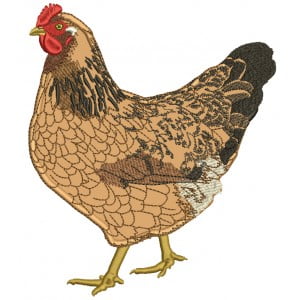COMMON POULTRY DISEASES DURING THE RAINY SEASON AND THEIR SIGNS, PREVENTION AND TREATMENT

COMMON POULTRY DISEASES DURING THE RAINY SEASON AND THEIR SIGNS, PREVENTION AND TREATMENT
Dr. Rambabu.D, MVSc, Ph.D, MBA.
Associate Professor
Dept. of Poultry Science, College of Veterinary Science, Korutla
PV Narsimha Rao Telangana Veterinary University
Jagtial dist – 505 326. Telangana State.
One of the fastest expanding industries is poultry. Both urban and rural populations depend heavily on poultry production for jobs, money, and animal protein, in addition to using it as crop manure. Despite the fact that there is a growth in the supply of meat worldwide, issues with bird handling, housing, and raising as well as disease control continue to hinder the development of this business. Rainfall during the monsoon season can last continuously for many days, increasing relative humidity and lowering temperature, which affects both the quality and amount of feeding. Wind speed also affects the spread of diseases. Due to the reduced egg production in exceptionally cold or hot weather, these variations have an impact on the production of birds, particularly laying birds. This decrease in egg production happens because stressed birds’ immune systems and ability to withstand illnesses are negatively impacted by excessive cold or heat. Farmers of poultry should take the required actions to reduce losses. Farmers in this situation should take the following actions:
1) Creating an appropriate shelter
To offer protection from the rain. To protect your birds from the dangers of cold, soggy ground and the potential for chickens to get wet, you should provide coops or roosts. Additionally, since chicken coops are a breeding ground for disease agents, stagnant water shouldn’t be kept there. Additionally, the litter needs to be kept dry and replaced as soon as it becomes wet since damp litter encourages microbial development, which increases the risk of disease outbreak and the release of poisonous gases bad for the health of the chickens. In order to prevent illness outbreaks at this time, it is essential to keep the surroundings germ- and bacteria-free.
2) Routine deworming
Drinking groundwater exposes animals to pathogens and parasites including intestinal roundworms, which are a frequent issue in hens. When hens become worm-infected, they often eat a lot of food but don’t gain any weight and may even stay too thin for their breed. De-wormers should be administered every three months to address this issue, strictly adhering to label instructions and following medical advice.
3) Providing fluorescent light
Chickens need roughly 16 hours of daylight for maximal production, therefore day duration is typically a stimulant for egg laying. However, everything gets foggy and there is less daylight during the rainy season. By supplying fluorescent light to mimic daylight, this effect can be reduced. There will be a consistent production level as a result.
4) Enough food
Poultry tend to congregate in groups in order to create heat and stay warm. Additionally, during this time, chickens will start to alter their eating patterns by consuming more feed in order to maintain the necessary body metabolism. During this time, giving them an extra handful of feed high in starch gives them some extra calories to burn to stay warm. To avoid being in a bind when it comes time to resupply, it is important to buy as much feed as is needed for the season. In order to prevent the growth of moulds and fungus, which are hazardous to birds when consumed, feed should be stored appropriately in a dry environment, ideally on a wooden platform away from the ground and wall.
5) With insurance protection
In poultry farming, the wet season often results in the birds becoming stressed, which negatively impacts their productivity and, through immunosuppression, their ability to withstand infections, resulting in a decrease in egg output. Additionally, there is a high likelihood that birds will contract numerous pathogenic and parasitic illnesses such coccidiosis, fowlpox, E. coli, and salmonella, which can result in the death of poultry. However, how much disease occurs, how many birds get sick, and how many birds die during this season will largely depend on the management techniques you use and the level of immunisation in your flock. Then, given that you cannot completely guard against some of these unforeseen circumstances, it is advised that you obtain insurance coverage to shield your company from the potentially crippling financial effects of any losses you may experience this season.
The wet, rainy, or cold seasons are when some specific poultry diseases are most prevalent, meaning that the onset of rain encourages the growth and spread of the parasites and disease-causing organisms. As a result, this is a time when the majority of poultry farmers encounter high rates of sickness and death.
Below, we’ll talk about a few of the diseases that are prevalent during the rainy season.
- Chicken pox
Any age of poultry birds might contract the highly contagious sickness known as fowl pox. It is brought on by the poxvirus, which is mostly spread by mosquitoes and other blood-sucking insects. The high concentration of stagnant water during the wet season favours mosquito breeding, which explains why fowl pox is more common during this time. Additionally, when poultry houses are not sufficiently protected from rain, the prevalence of damp litter becomes visible. Due to the development of damp litter, the pen is subsequently more likely to experience fly issues.
Round lesions with scabby centres appear on the bird’s skin as a result of fowl pox. The wattle, face, comb, and occasionally the legs are where the bulk of skin lesions are found. The lining of the mouth and windpipe are also impacted by this illness. The throat lesions that grow can progress to the point of blocking the throat, which could ultimately result in asphyxia death. The infected bird may become temporarily or permanently blind as a result of facial lesions that spread to the eyes.
Mosquitoes are the mechanical carriers of the chicken pox. Therefore, it is wise to lessen the mosquito population near your farm or other outside area. Unfortunately, there is no available treatment. Once a bird has been impacted by the fowl pox virus. However, a sick bird will recover from the illness in two weeks or more with a low fatality rate as long as it is eating and drinking. A bird that successfully recovers from fowl pox gains a lifelong immunity to the illness.
Vaccination is frequently the only way to prevent this disease because standard sanitation and management procedures are ineffective. It is advised to vaccinate breeders, egg layers, and hens and turkeys who are particularly vulnerable to fowl pox. Between the ages of 6 and 10 weeks, live fowl pox vaccine is injected into the wing web of the birds. Controlling aggressive pecking among birds will lessen the skin damage that fowl pox causes.
- Fowl cholera
A bacterial illness known as fowl cholera affects birds 6 weeks of age and older. Pasteurella multocida is the causative bacterium. It has a high fatality rate in acute cases and is very communicable. Because wet litter acts as a haven for countless bacteria, the causative organism spreads easily during the rainy season.
Acute instances involve the abrupt death of otherwise healthy birds, whereas chronic cases involve the development of symptoms that resemble those of fowl typhoid:
- Drooped wings and tail feathers; ruffled feathers; yellow, green, or grey faeces; loss of appetite; laboured breathing; swelling of the leg joints, sinuses, wattle, and foot pad
- Torticollis, a twisting of the neck; • Expulsion from the nostril or beak
Tetracycline, erythromycin, and sulfa medicines can all be used to treat fowl cholera. By giving a fowl cholera vaccination to poultry birds, fowl cholera can be prevented. Maintain a clean and hygienic environment. Maintain strict biosecurity standards and keep rodents, wild birds, and other animals away.
- Pullorum disease, Escherichia coli, and salmonellosis (Bacillary white diarrhoea)
All ages of birds are susceptible to these bacterial illnesses. They are common in farms or pens with inadequate cleanliness, as is the case when damp trash is left lying around for an extended period of time. They have an impact on the sick birds’ digestive systems. Severe diarrhoea, loss of appetite, depression, and emaciation are among the symptoms. Omphalitis affects chicks; pullorum illness causes white, pasty diarrhoea; huddling and laboured breathing;
Giving the flock a broad-spectrum antibiotic can treat the diseases Pullorum, E. coli, and salmonellosis. High standards of farm and pens sanitation must be upheld. The adoption of biosecurity measures is necessary. Don’t give tainted feed to birds.
- Aspergillosis
Aspergillus fumigatus is the pathogen that causes aspergillosis in chicken. Because of the high humidity during the cold season, feeds or litter get damp, which fosters the growth and flourishing of fungus. The birds also breathe in Aspergillus spores, which grow into lesions that fill the lungs and cause respiratory discomfort or difficulties. If the stocking density is high and ventilation is insufficient or poor, birds under intensive management systems would have high disease spread.
In birds with aspergillosis, a wide range of clinical symptoms are evident. This is due to the fact that they fluctuate based on the chicken’s mode of infection, location of lesions on their body, affected organs, and general health (immune system). Acute or chronic Aspergillosis can occur.
Acute form: Commonly seen in young chicks, this one has a significant morbidity and fatality rate. The first signs normally appear quite quickly, within a week. Without immediate veterinary care, the majority of infected birds would perish within a few days. Lethargy, depression, appetite loss, breathing difficulties, and cyanosis (bluish/purplish comb) are the most typical symptoms.
Chronic form: This typically has a very modest beginning and can take weeks or months to manifest. The older birds who have a history of malnutrition, stress, concurrent disease, or extended use of antibiotics or corticosteroids are most likely to develop it. Between less than a week and more than six weeks, the disease’s complete course can last. Weight loss, decreased appetite, exercise intolerance, increased respiratory rate, alterations in vocalisation (voice), frequently more obvious in roosters, audible respiratory sounds, tail bobbing, and open-mouthed breathing are among the most typical clinical indications that have been noted.
Aspergillosis can typically be presumed to be present based on the flock’s history, clinical symptoms, and physical examination. Your veterinarian will need to gather some samples and submit them to a diagnostic laboratory to confirm the presence of Aspergillus in the bird in order to make a conclusive diagnosis of aspergillosis.
Aspergillosis can be prevented with dry, high-quality food and litter as well as basic cleanliness. Spraying the area with a powerful antifungal antiseptic may help to lessen the difficulty. Nystatin and amphotericin B have been used on valuable birds.
- Coccidiosis
In poultry, the protozoan Eimeria sp. causes coccidiosis; the majority of species infect different areas in the intestine. The intestinal mucosa sustains significant damage during the quick (4–7 days) infectious process, which is characterised by parasite reproduction in host cells. The diverse species of poultry coccidia parasitize particular regions of the gut, and they are typically host-specific. However, the coccidia may parasitize the entire digestive tract in game birds, including quail. Coccidia are found in poultry, captive-raised game birds, and wild birds all throughout the world. The common damp litter and warm pen temperatures during the rainy season encourage the sporulation of the coccidian oocyst and, as a result, the spread of coccidiosis.
Clinical signs include anaemia, ruffled feathers, bloody faeces, and somnolence. The large percentage of visibly ill birds, severe diarrhoea, and high death rate are only a few more symptoms of coccidiosis. Consumption of food and liquids is low. In addition to increased mortality, outbreaks may result in weight loss, culling behaviour, decreased egg production, and other symptoms. Depigmentation and probable secondary infections, notably infections with Clostridium spp., can result from mild intestinal species infections that would otherwise be considered subclinical. Serious infection survivors bounce back in 10 to 14 days, although they might never regain lost performance.
The intestinal system hosts the lesions nearly fully, and they frequently have a characteristic position and appearance that aid in diagnosis.
All the birds in a flock must be treated if coccidiosis is found to be present. Additionally, the litter must be changed to prevent birds from picking up the sporulated oocyst from the infected birds’ droppings. A few examples of common anticoccidial medications are Amprolium, toltrazuril, and sulfaquinoxaline.
The first step in prevention is good hygiene. Making ensuring the chicken house is generally tidy and dry is a smart idea.
- Make sure the water is pure and current. Keep feeding areas dry and spotless.
- Make sure the birds have enough room; avoid overcrowding as it increases the risk of coccidiosis. For 3-5 chickens, a square metre is often required.
- Provide coccidiosis-treated beginning feed to chicks if they have not had the necessary vaccinations. By the time the chicks are 12 days old, anticoccidial treatment should be administered (this might vary depending on the vaccination schedule being followed).
- To stop an illness from spreading horizontally, the farm should use an all-in, all-out strategy. For the sake of safeguarding the current stock, keep the fresh batch isolated for at least two weeks if this procedure is not practical.
How to Best Manage Chickens During the Cold or Rainy Season
Poultry farmers must take the following measures to manage their flocks of chickens, turkeys, quails, ducks, and pheasants in cold or rainy weather:
Reduce the amount of nutrients that the birds don’t need to produce heat or add oil or fat to their diet. Due to the fact that birds need more feed to produce heat, this is required to prevent waste and lower feed production costs.
- Add electric lights or a heater to the pen to provide the birds with a backup source of heat. This would allow the birds to stay warm and drink adequate water without using up their stored energy.
Birds drink from the stagnant water nearby and pick up parasitic species’ eggs, such as intestinal worms, which are rare in an intense system but common in a free-range system. Deworming poultry birds using potent dewormers like piperazine is crucial and should be done twice a month. Every month, the birds should be given a broad-spectrum antibiotic like oxytetracycline.
- When it rains, be sure to provide a wide roof overhang over the entrance and sides of pens to keep water out. Building foot dips at the pen entrances is a good idea, and the foot dips should always contain a potent disinfecting solution.
- Vaccinate birds as directed and as necessary.




